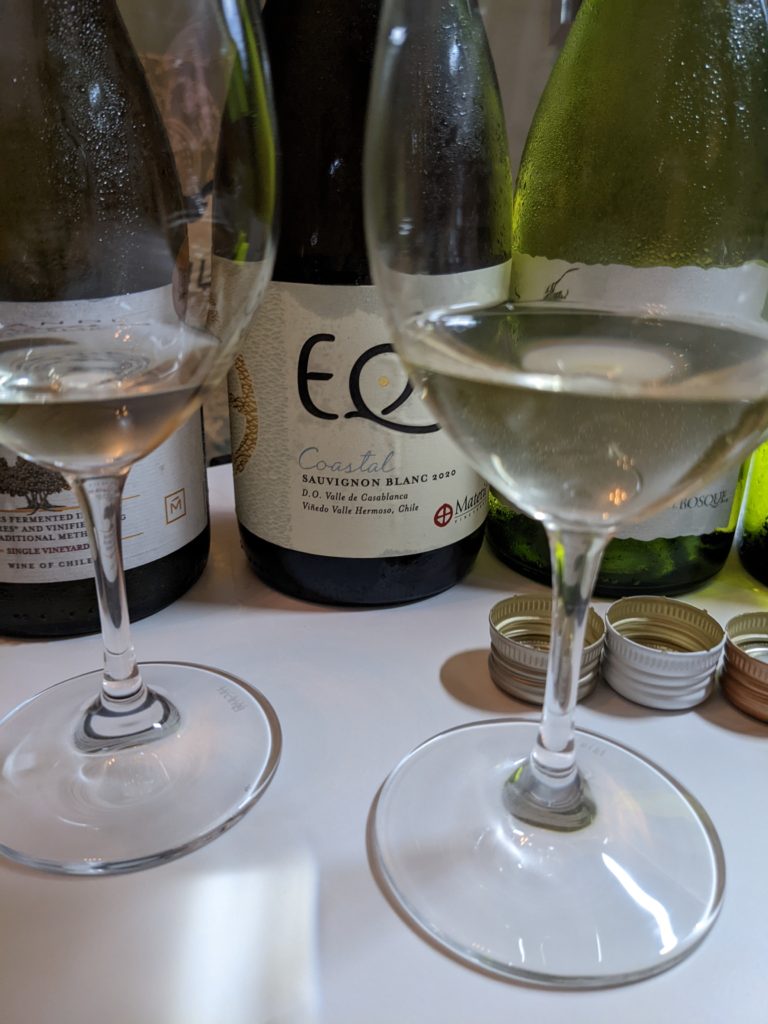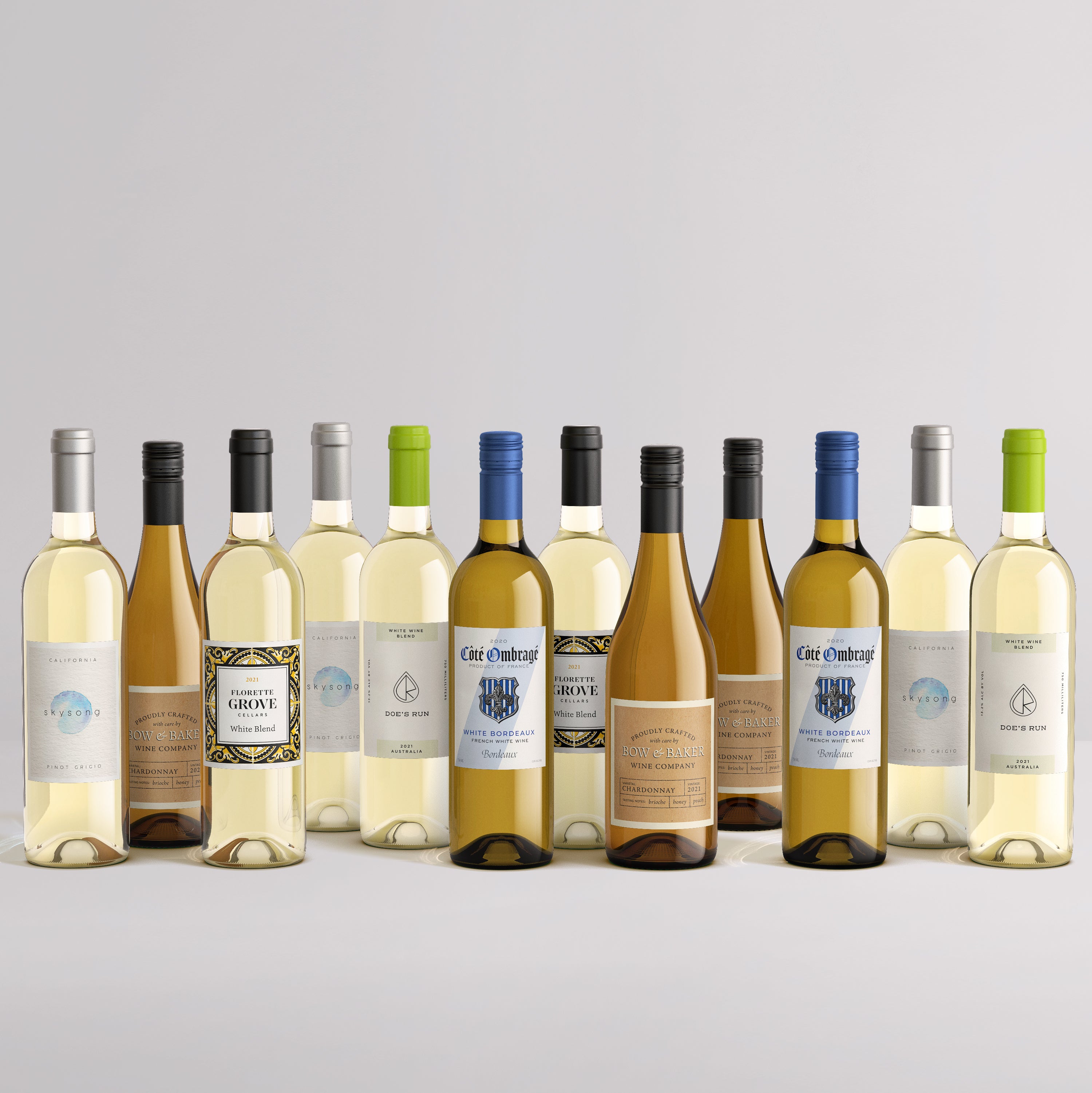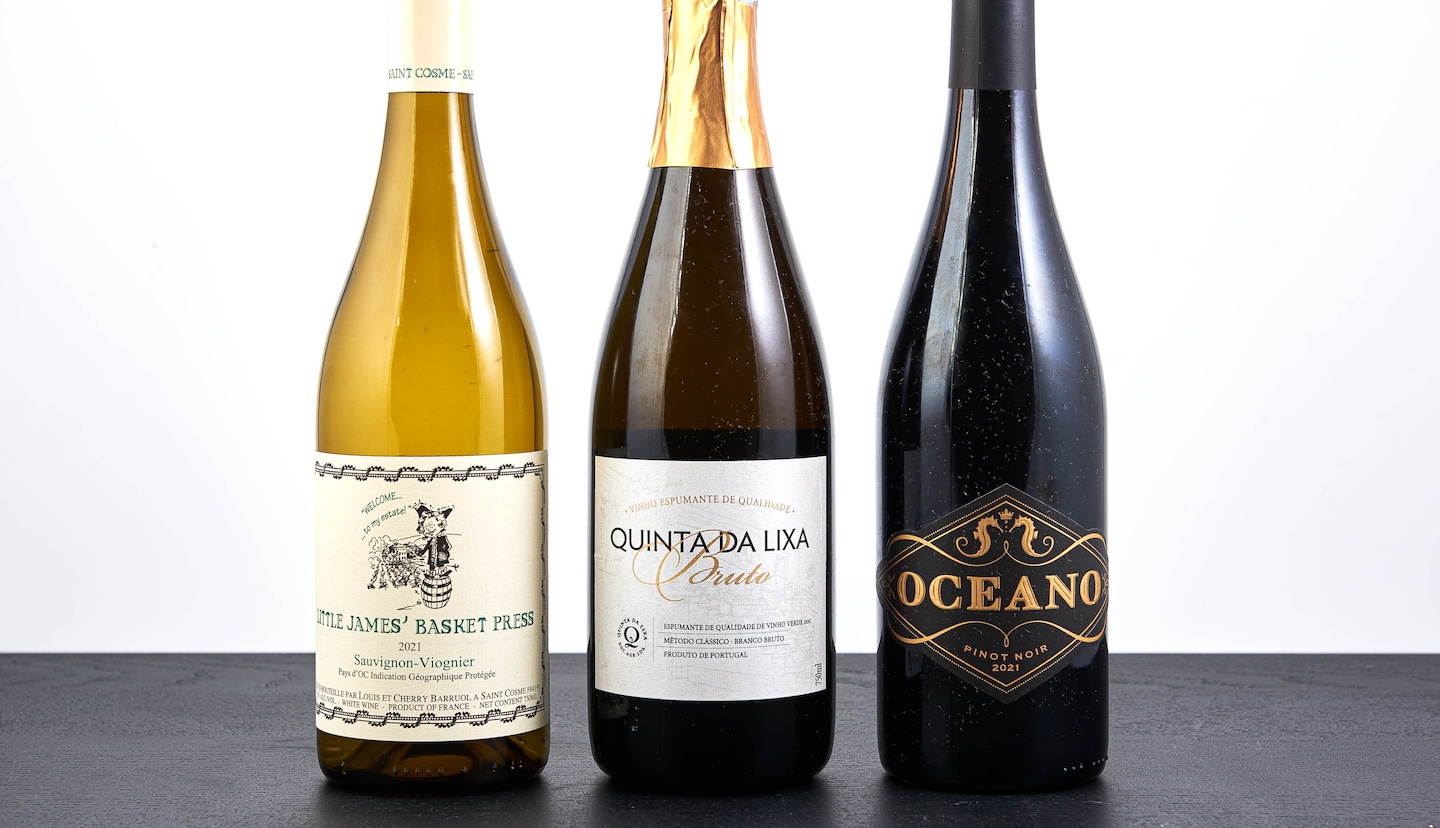Chardonnay: The Popular Choice For White Wine Lovers

Chardonnay has long been a favorite among white wine enthusiasts, and for good reason. Its versatility allows for a wide range of flavors and styles, making it a popular choice for many. Whether you prefer a rich and buttery Chardonnay with notes of oak and vanilla, or a lighter and crisper version with hints of citrus and tropical fruits, Chardonnay offers something for everyone. Its ability to pair well with a variety of foods also adds to its appeal. So next time you’re looking to enjoy a glass of white wine, consider indulging in a Chardonnay and savor its delicious and complex flavors.
Chardonnay Characteristics And Flavor Profile
Chardonnay is beloved by white wine enthusiasts for its diverse range of characteristics and flavor profiles. This versatile varietal can range from crisp and citrusy to rich and buttery, with notes of apple, pear, tropical fruits, and oak. The flavor of Chardonnay can be greatly influenced by winemaking techniques such as malolactic fermentation and oak aging. This allows for a wide variety of styles and expressions of Chardonnay, ensuring that there is something to suit every palate. Whether you prefer a light and refreshing Chardonnay or a more full-bodied and complex one, Chardonnay offers a world of flavors to explore.
Chardonnay Food Pairing Suggestions
Chardonnay, with its diverse flavor profile, pairs well with a wide range of foods. It is best paired with simply flavored and simply prepared dishes, such as baked fish or poultry with butter and herbs. The wine’s impression of sweetness can be enhanced by ingredients like corn, butternut squash, and sweet potatoes. Caramelized foods from roasting or grilling, like crisp-skinned roast chicken, also complement the flavors of Chardonnay. These food pairing suggestions help enhance the enjoyment of Chardonnay, allowing the wine’s delicate flavors to shine through.
Sauvignon Blanc: A Refreshing White Wine Option

Sauvignon Blanc is a popular choice for white wine lovers seeking a refreshing and vibrant option. With its crisp acidity, zesty flavors, and herbaceous aromas, Sauvignon Blanc offers a delightful sensory experience. This wine is known for its notes of citrus, green apple, and tropical fruits, making it a perfect choice for those who enjoy a lively and refreshing taste profile. Whether paired with seafood, salads, or enjoyed on its own, Sauvignon Blanc is a versatile and invigorating white wine option that is sure to please.
Sauvignon Blanc Tasting Notes And Aromas
When it comes to Sauvignon Blanc, there is an array of tasting notes and aromas to discover. This white wine is known for its vibrant and zesty flavors, with prominent notes of citrus, green apple, and tropical fruits. It often displays herbaceous aromas, such as freshly cut grass and bell pepper. You may also detect hints of grapefruit, passion fruit, and gooseberry. These refreshing and bright flavors make Sauvignon Blanc a perfect choice for those seeking a crisp and invigorating wine experience.
Sauvignon Blanc Serving Temperature And Glassware
When serving Sauvignon Blanc, it is important to consider the temperature and glassware to fully enjoy its refreshing qualities. It is best served chilled, with a recommended temperature between 45-50°F (7-10°C). This cool temperature enhances the crispness and vibrant flavors of the wine. As for the glassware, a standard white wine glass will suffice. The shape of the glass helps to concentrate the wine’s aromas, allowing you to fully appreciate its vibrant and fruity notes. So, pour yourself a glass of chilled Sauvignon Blanc and savor its delightful flavors.
Riesling: Exploring The Sweet And Dry Varieties

Riesling is a versatile white wine known for its wide range of styles, from sweet to dry. The sweetness in Riesling can vary depending on the region and winemaking process, allowing wine lovers to explore different taste profiles. Sweet Rieslings often have flavors of tropical fruits and honey, while dry Rieslings showcase crisp acidity and notes of citrus and green apple. Whether you prefer a luscious dessert wine or a refreshing dry option, Riesling offers something for everyone to enjoy. So next time you’re in the mood for white wine, consider exploring the sweet and dry varieties of Riesling.
Riesling Production Regions And Styles
Riesling is a white wine that is produced in various regions around the world, but it is most notably associated with Germany. The cool climate of regions such as the Mosel, Rheingau, and Pfalz in Germany allows Riesling grapes to develop their characteristic acidity and vibrant flavors. Other countries, such as Austria, Australia, and the United States (particularly in the states of Washington and New York), also produce excellent examples of Riesling. In terms of styles, Riesling can range from bone-dry to lusciously sweet, offering a diverse range of options for wine enthusiasts to explore.
Riesling Aging Potential And Cellaring Tips
Riesling has a unique aging potential that sets it apart from other white wines. While most white wines are meant to be enjoyed within a few years of release, Riesling has the ability to develop and evolve over time. The high acidity and balanced sugar levels in Riesling allow it to age gracefully, developing complex flavors and aromas. When cellaring Riesling, it is important to store it in a cool, dark place with stable temperatures. The ideal cellaring temperature for Riesling is around 55°F (13°C). As Riesling ages, it can develop notes of honey, petrol, and dried fruits, adding depth and complexity to the wine. So, if you’re a fan of aged white wines, Riesling is definitely worth considering.
Pinot Grigio: Light And Crisp White Wine

Pinot Grigio is a popular light and crisp white wine known for its refreshing qualities. It is typically characterized by its pale yellow color with hints of green. The flavor profile of Pinot Grigio can vary depending on the region it is grown in, but it often exhibits notes of citrus fruits, green apple, and melon. With its light body and high acidity, Pinot Grigio pairs well with a variety of dishes, including seafood, salads, and light pasta dishes. It is also a great choice for summer sipping and can be incorporated into refreshing wine cocktails. So, whether you’re looking for a wine to enjoy on its own or to complement your favorite meal, Pinot Grigio is a versatile and enjoyable choice.
Pinot Grigio Origin And Winemaking Process
Pinot Grigio has its origins in the Pinot Gris grape, which is native to France. The grape variety thrives in regions such as Italy, where it is known as Pinot Grigio. The winemaking process for Pinot Grigio typically involves harvesting the grapes early to retain their acidity and freshness. After gentle pressing, the juice is fermented in stainless steel tanks at cool temperatures to preserve the wine’s delicate flavors. This process results in a light and crisp white wine that is loved for its refreshing qualities and versatility.
Pinot Grigio Perfect Summer Wine And Cocktail Mixes
Pinot Grigio is the perfect summer wine with its light and crisp flavors. Its refreshing qualities make it an excellent choice for sipping on a sunny day by the pool or enjoying a picnic in the park. It pairs well with a variety of summer dishes such as seafood, salads, and light pasta dishes. Additionally, Pinot Grigio can also be used to create delicious summer cocktails. Its citrusy and fruity notes make it a great base for spritzers, sangrias, and even margaritas. So, whether you prefer it straight or mixed, Pinot Grigio is a versatile wine that brings a taste of summer to every glass.
Viognier: Aromatic White Wine With Floral Notes

Viognier is an aromatic white wine known for its distinct floral notes. It is a grape variety that is grown in various regions around the world, including the Northern Rhône, California, Virginia, and Australia. Viognier offers an exquisite bouquet of aromas, including honeysuckle, jasmine, and orange blossoms. These floral notes add a beautiful and fragrant touch to the wine. The flavor profile of Viognier is often described as rich and complex, with hints of ripe stone fruits such as peach and apricot, as well as tropical fruits like pineapple and mango. Its aromatic qualities make Viognier a delightful choice for those looking to explore the world of white wines.
Viognier Flavor Profiles And Characteristics
Viognier is known for its distinct flavor profiles and characteristics. It offers a rich and complex taste with notes of ripe stone fruits such as peach and apricot, as well as tropical fruits like pineapple and mango. The wine has a beautiful balance between sweetness and acidity, making it extremely enjoyable to drink. Viognier is also characterized by its floral notes, including honeysuckle, jasmine, and orange blossom, which give it a fragrant and aromatic quality. These flavor profiles and characteristics make Viognier a delightful choice for wine enthusiasts looking for something unique and sophisticated.
Viognier Food Pairing And Serving Suggestions
Viognier, with its rich and exotic flavor profile, pairs exceptionally well with a variety of dishes. Its crisp acidity and aromatic floral notes make it an ideal choice for spicy cuisine, such as curries or Thai dishes. The wine’s fruit-forward nature can also complement seafood, particularly grilled shrimp or lobster. For a unique pairing, try Viognier with dishes that incorporate tropical fruits like mango or pineapple. When it comes to serving Viognier, it is best enjoyed chilled, between 45-50°F, which enhances its refreshing qualities. Serve it in a white wine glass to fully appreciate its delightful aromas and flavors.
Conclusion

In conclusion, exploring the world of white wines offers a delightful journey of flavors and aromas. From the popular Chardonnay to the refreshing Sauvignon Blanc, the sweet and dry varieties of Riesling, and the light and crisp Pinot Grigio, there is a white wine to suit every palate. The aromatic Viognier with its floral notes adds a unique touch to the white wine experience. Whether paired with seafood, spicy cuisine, or simply enjoyed on its own, white wine provides a versatile and enjoyable drinking experience. So raise a glass and savor the crisp elegance of white wine.
Benefits Of Enjoying Different Varieties Of White Wine
Exploring different varieties of white wine offers a multitude of benefits. First and foremost, it expands your palate and allows you to appreciate the nuances of different flavors and aromas. Each varietal has its own unique characteristics, ranging from the crispness of Sauvignon Blanc to the complexity of Chardonnay. Moreover, white wine is known for its versatility when it comes to food pairing. Whether enjoying a seafood dinner or a spicy cuisine, there is a white wine that can perfectly complement your meal. Lastly, the experience of trying different white wines is a delightful journey of discovery and enjoyment.
Tips For Enhancing Your White Wine Tasting Experience
To enhance your white wine tasting experience, consider the following tips:
- Serve at the right temperature: Chilled white wines should be served between 45-55°F (7-13°C) to preserve their freshness and aromas.
- Use the appropriate glassware: Choose a glass with a narrower bowl to concentrate the aromas and direct them towards your nose.
- Take small sips: When tasting white wine, take small sips to fully appreciate the flavors and nuances.
- Pair with complementary foods: Experiment with different food pairings to enhance the flavors of both the wine and the dish.
- Take notes: Keep a wine journal to record your impressions of different white wines, helping you discover your preferences and track your wine journey.
Remember, the most important tip is to savor and enjoy the experience!
FAQ About Glass Of White Wine: Savoring The Crisp Flavor
Q: What are the common types of white wine available?
A: Common types of white wine include Chardonnay, Sauvignon Blanc, Pinot Grigio, and Riesling.
Q: How should white wine be served?
A: White wine is best served chilled, typically between 45-55°F (7-13°C), to fully savor its flavors.
Q: What foods pair well with white wine?
A: White wine pairs well with a variety of dishes including seafood, poultry, salads, and cheeses like Brie or Gruyère.
Q: How can one enhance the flavor profile of a glass of white wine?
A: To enhance the flavor of white wine, try swirling it in the glass to aerate the wine, releasing its aromas.
Q: Is white wine only for warm weather?
A: While white wine is often associated with warmer seasons, it can be enjoyed year-round depending on personal preference and food pairings.
Q: Can white wine be aged like red wine?
A: Though most white wines are meant for immediate consumption, certain varieties like Chardonnay and Riesling can benefit from aging in the right conditions.
Q: How can one best savor the crisp flavor of white wine?
A: Sip and savor white wine slowly, allowing the flavors to unfold on the palate. Take note of its acidity, fruitiness, and finish.

Family-owned and proudly serving the Black River Falls area since 1973. Our convenience store, bar, and restaurant within the same building are unique to the area. We accommodate our smokers with a separate facility. We are conveniently located within two miles of the interstate at the corners of Highway 12 and 27. We are your one-stop destination for a restaurant/bar and convenience store.